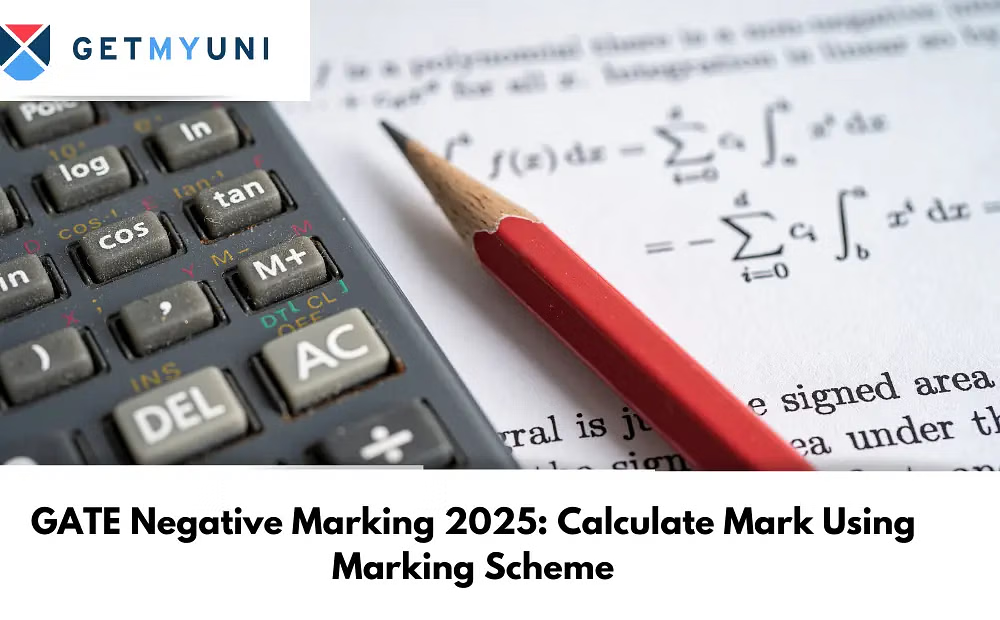GATE Physics syllabus 2024 comprises nine sections which includes Electronics, Nuclear and Particle Physics, Mathematical Physics, Classical Mechanics and more.
GATE Physics syllabus 2024 mainly includes topics from Core Physics and General Aptitude. The weightage of the topics is 85% and 15%, respectively. Candidates who opt for Physics as their first paper for GATE 2024 can select the second paper among the subjects.
GATE Physics Syllabus 2024
The candidates who chose Physics must thoroughly know about the 2024 GATE Physics syllabus 2024 topics to ace the examination. The key sections under the GATE 2024 Physics syllabus are as follows.
- Section 1: Mathematical Physics
- Section 2: Classical Mechanics
- Section 3: Electromagnetic Theory
- Section 4: Quantum Mechanics
- Section 5: Thermodynamics and Statistical Physics
- Section 6: Atomic and Molecular Physics
- Section 7: Solid State Physics
- Section 8: Electronics
- Section 9: Nuclear and Particle Physics
The important topics under each of the key sections are tabulated below.
| Sections | Topics |
| Section 1: Mathematical Physics |
Vector calculus: linear vector space: basis, orthogonality and completeness; matrices; similarity transformations, diagonalization, eigenvalues and eigenvectors; linear differential equations: second order linear differential equations and solutions involving special functions; complex analysis: Cauchy-Riemann conditions, Cauchy’s theorem, singularities, residue theorem and applications; Laplace transform, Fourier analysis; elementary ideas about tensors: covariant and contravariant tensors. |
| Section 2: Classical Mechanics |
Lagrangian formulation: D’Alembert’s principle, Euler-Lagrange equation, Hamilton’s principle, calculus of variations; symmetry and conservation laws; central force motion: Kepler problem and Rutherford scattering; small oscillations: coupled oscillations and normal modes; rigid body dynamics: inertia tensor, orthogonal transformations, Euler angles, Torque free motion of a symmetric top; Hamiltonian and Hamilton’s equations of motion; Liouville’s theorem; canonical transformations: action-angle variables, Poisson brackets, Hamilton- Jacobi equation. |
|
Special theory of relativity: Lorentz transformations, relativistic kinematics, mass-energy equivalence. |
|
| Section 3: Electromagnetic Theory |
Solutions of electrostatic and magnetostatic problems including boundary value problems; method of images; separation of variables; dielectrics and conductors; magnetic materials; multipole expansion; Maxwell’s equations; scalar and vector potentials; Coulomb and Lorentz gauges; electromagnetic waves in free space, non-conducting and conducting media; reflection and transmission at normal and oblique incidences; polarization of electromagnetic waves; Poynting vector, Poynting theorem, energy and momentum of electromagnetic waves; radiation from a moving charge. |
| Section 4: Quantum Mechanics |
Postulates of quantum mechanics; uncertainty principle; Schrodinger equation; Dirac Bra-Ket notation, linear vectors and operators in Hilbert space; one dimensional potentials: step potential, finite rectangular well, tunneling from a potential barrier, particle in a box, harmonic oscillator; two and three dimensional systems: concept of degeneracy; hydrogen atom; angular momentum and spin; addition of angular momenta; variational method and WKB approximation, time independent perturbation theory; elementary scattering theory, Born approximation; symmetries in quantum mechanical systems. |
| Section 5: Thermodynamics and Statistical Physics |
Laws of thermodynamics; macrostates and microstates; phase space; ensembles; partition function, free energy, calculation of thermodynamic quantities; classical and quantum statistics; degenerate Fermi gas; black body radiation and Planck’s distribution law; Bose-Einstein condensation; first and second order phase transitions, phase equilibria, critical point. |
| Section 6: Atomic and Molecular Physics |
Spectra of one-and many-electron atoms; spin-orbit interaction: LS and jj couplings; fine and hyperfine structures; Zeeman and Stark effects; electric dipole transitions and selection rules; rotational and vibrational spectra of diatomic molecules; electronic transitions in diatomic molecules, Franck-Condon principle; Raman effect; EPR, NMR, ESR, X-ray spectra; lasers: Einstein coefficients, population inversion, two and three level systems. |
| Section 7: Solid State Physics |
Elements of crystallography; diffraction methods for structure determination; bonding in solids; lattice vibrations and thermal properties of solids; free electron theory; band theory of solids: nearly free electron and tight binding models; metals, semiconductors and insulators; conductivity, mobility and effective mass; Optical properties of solids; Kramer’s-Kronig relation, intra- and inter-band transitions; dielectric properties of solid; dielectric function, polarizability, ferroelectricity; magnetic properties of solids; dia, para, ferro, antiferro and ferri-magnetism, domains and magnetic anisotropy; superconductivity: Type-I and Type II superconductors, Meissner effect, London equation, BCS Theory, flux quantization. |
| Section 8: Electronics |
Semiconductors in equilibrium: electron and hole statistics in intrinsic and extrinsic semiconductors; metal semiconductor junctions; Ohmic and rectifying contacts; PN diodes, bipolar junction transistors, field effect transistors; negative and positive feedback circuits; oscillators, operational amplifiers, active filters; basics of digital logic circuits, combinational and sequential circuits, flip-flops, timers, counters, registers, A/D and D/A conversion. |
| Section 9: Nuclear and Particle Physics |
Nuclear radii and charge distributions, nuclear binding energy, electric and magnetic moments; semi-empirical mass formula; nuclear models; liquid drop model, nuclear shell model; nuclear force and two nucleon problem; alpha decay, beta-decay, electromagnetic transitions in nuclei; Rutherford scattering, nuclear reactions, conservation laws; fission and fusion; particle accelerators and detectors; elementary particles; photons, baryons, mesons and leptons; quark model; conservation laws, isospin symmetry, charge conjugation, parity and time-reversal invariance. |
Also Check: GATE Qualifying Marks 2024
The following is the GATE syllabus for the 15% of General Aptitude questions asked in the examination.
| Section | Topics |
| Verbal Aptitude | Basic English grammar: tenses, articles, adjectives, prepositions, conjunctions, verb-noun agreement, andother parts of speech. Basic vocabulary: words, idioms, and phrases in context Reading andcomprehension Narrative sequencing |
| Quantitative Aptitude | Data interpretation: data graphs (bar graphs, pie charts, and other graphs representing data), 2- and 3-dimensional plots, maps, and tables Numerical computation and estimation: ratios, percentages, powers,exponents and logarithms, permutations and combinations, and series Mensuration and geometryElementary statistics and probability |
| Analytical Aptitude | Logic: deduction and induction Analogy Numerical relations and reasoning Spatial AptitudeTransformation of shapes: translation, rotation, scaling, mirroring, assembling, and grouping Paperfolding, cutting, and patterns in 2 and 3 dimensions |
| Spatial Aptitude | Transformation of shapes: translation, rotation, scaling, mirroring, assembling, and grouping Paperfolding, cutting, and patterns in 2 and 3 dimensions |
Also Check: Best Physics Books
GATE Exam Pattern 2024
The GATE 2024 examination is the gateway for aspirants to get admission to postgraduate and doctoral-level programs in the IITs. The GATE exam pattern of the GATE Physics 2024 paper is as follows.
| Particulars | Details |
| Exam Mode | Online, Computer Based Test (CBT) |
| Duration | 3 hours |
| Total Questions | 65 |
| Total Marks | 100 |
| Types of Questions | Multiple Choice Questions |
| Numerical Answer Type (NAT) Questions | |
| Sections | General Aptitude |
| Subject-based (Core Physics) | |
| Marking Scheme | MCQ - Negative marking; 1/3 for 1 mark questions, 2/3 for 2 marks questions |
| NAT/MSQ - No negative marking |
Also Check: Engineering Physics Books
GATE Books for Physics 2024
The books that can aid in your preparation for the GATE Physics syllabus 2024 are given below. Consistency and a proper preparation strategy will help you achieve your desired results.
| Book | Author/ Publication |
| Chapterwise Solved Papers Physics GATE | Vijay Kumar |
| GATE 2021 – Guide – Physics | GKP |
| GATE - Physics - Chapterwise Previous Year's Solved Papers | Dr Vijay Kumar | Dr Israt Ali |
Also Check: B.Sc Physics Books




























